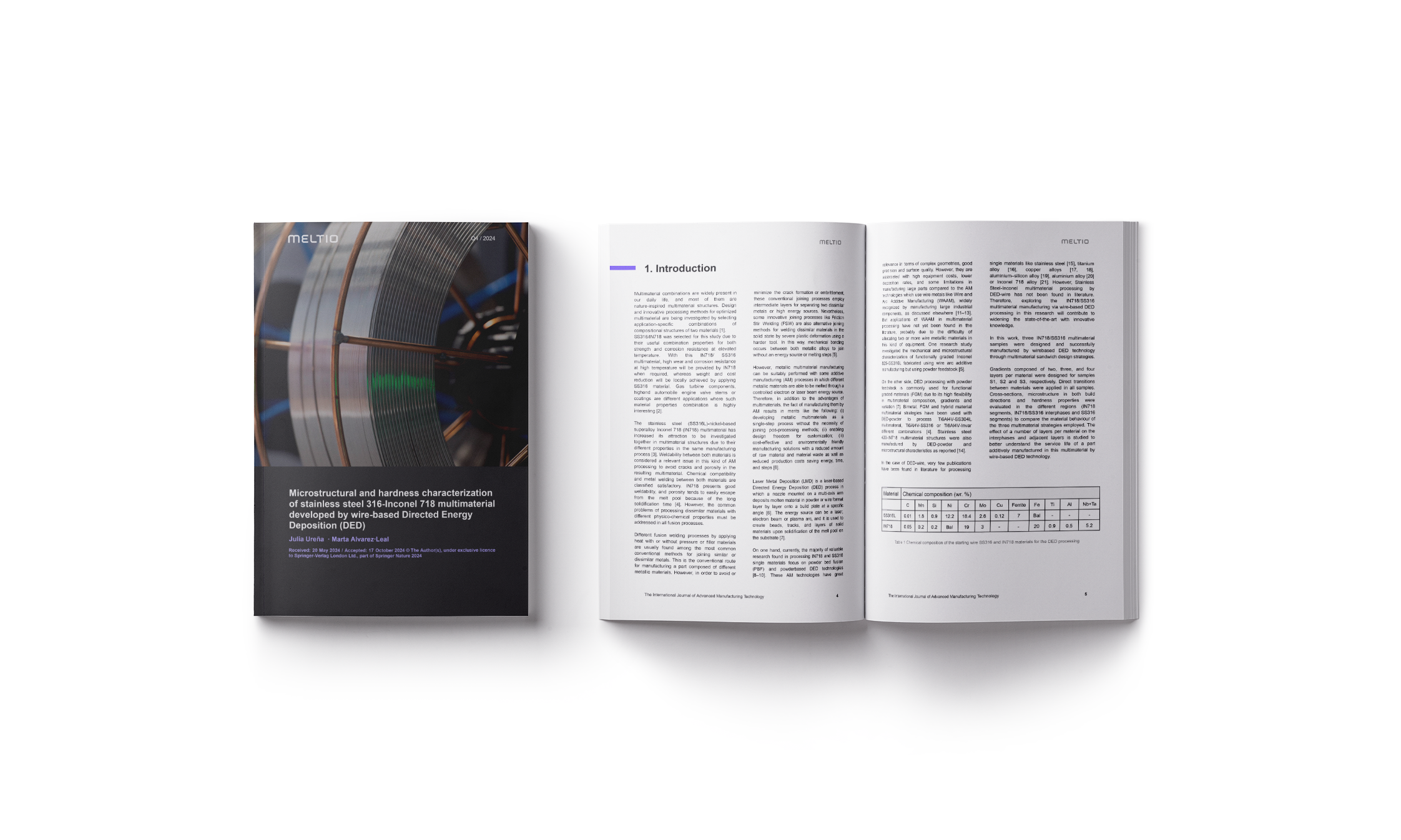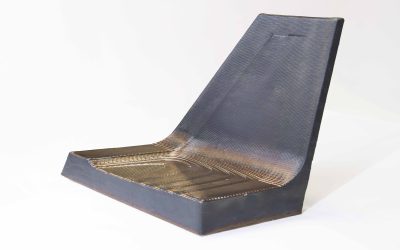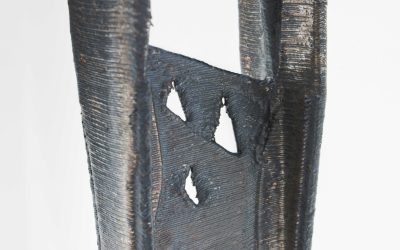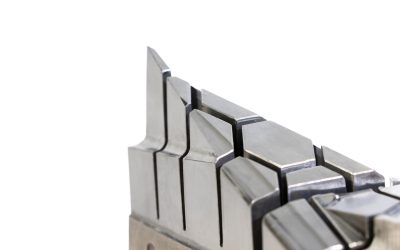The need to combine different material properties in order to withstand harsh conditions has been a recurring requirement across a wide range of industries. Traditionally, this has been achieved through conventional multi-material manufacturing, often requiring multiple steps and joining processes. However, the ability to produce an entire component in a single process using additive manufacturing, while integrating two different materials in a single print, offers a promising avenue for exploration.
Introduction
Imagine materials that combine the best of both worlds: strength and durability with corrosion resistance and cost-effectiveness.
Traditionally, creating these multi-material combinations has required separate manufacturing processes and complex joining techniques. However, advances in Additive Manufacturing (AM) now allow the seamless integration of different materials in a single step.
This article delves into a groundbreaking study in which researchers used a Wire-based Directed Energy Deposition (DED-wire) process, through Meltio’s laser metal 3D printing technology, to fuse Stainless Steel (SS316) and Inconel 718 (IN718) in a single build producing robust multi-material components. In this specific study, three IN718/SS316 multi-material samples were designed and successfully fabricated using Meltio multi-laser Head deposition.
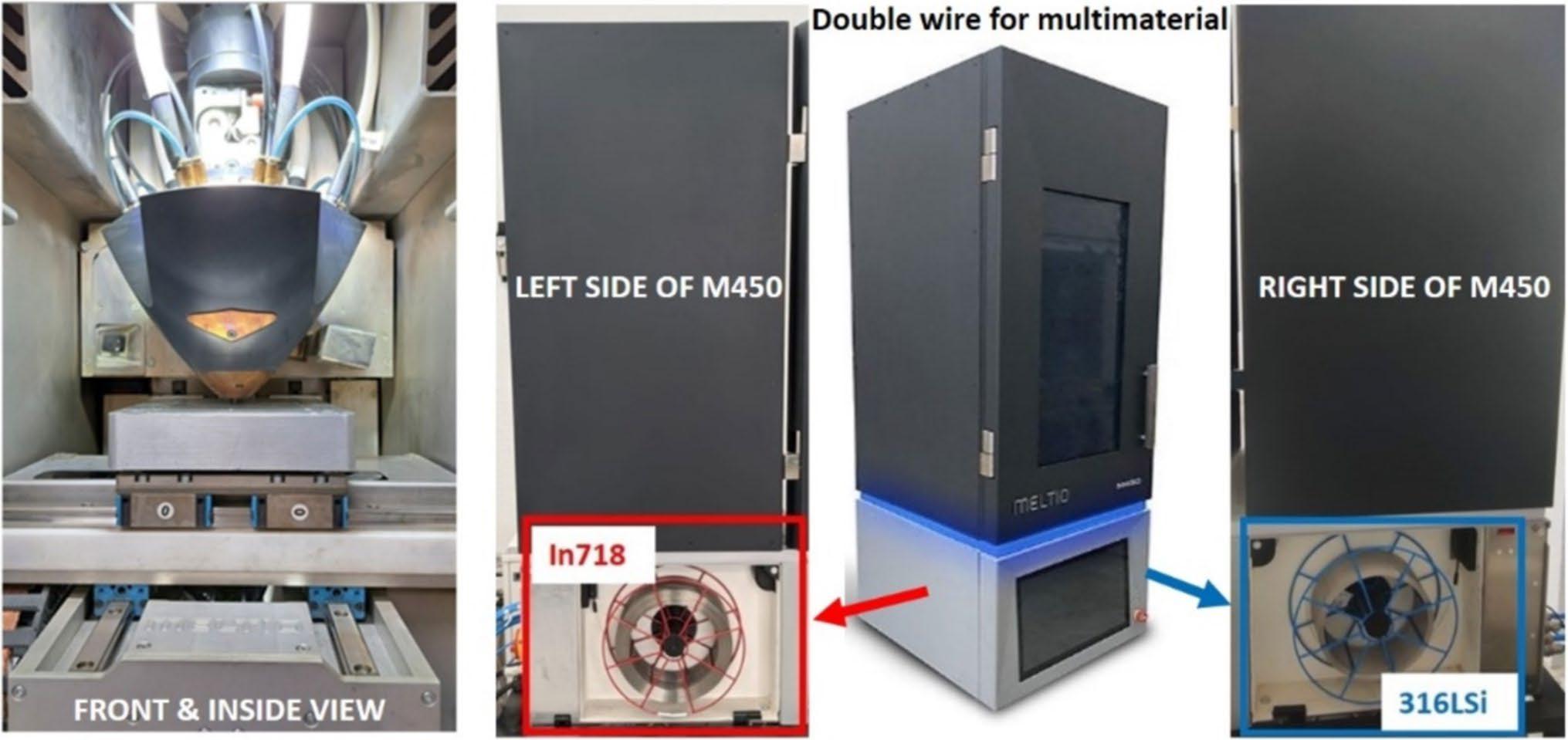
1. Why combine SS316 and Inconel 718
The stainless steel (SS316L) and nickel-based superalloy Inconel 718 (IN718) multimaterial system has garnered increasing interest for investigation in multimaterial structures, owing to their different properties within a single manufacturing process.
Meltio SS316L is an austenitic steel with excellent durability, low reactivity and adequate elevated temperature properties. The alloy has a low carbon content which makes it particularly recommended where there is a risk of intergranular corrosion. As a result, parts made from SS316L are an excellent choice for corrosion-prone applications.
Meltio Nickel 718 is a highly versatile and corrosion-resistant alloy with exceptional mechanical properties at both high and low temperatures. Its ability to withstand harsh environments and high-stress applications has made it a popular choice across a range of industries, including aerospace, energy, and marine. Being Nickel 718 a difficult alloy to work using conventional methods, 3D Printing facilitates its usage for a broader range of applications.
Therefore, SS316 and IN718 were selected for this study because of their advantageous combination of strength and corrosion resistance at elevated temperatures. In this IN718/SS316 multi-material system, IN718 provides high wear and corrosion resistance at high temperatures where required, while SS316 contributes to localised weight and cost reduction.
Applications such as gas turbine components, high-performance automotive valve stems and coatings benefit greatly from the combination of these properties.
2. Why Meltio for Multimaterial manufacturing
Most of the valuable research found in the processing of IN718 and SS316 single materials focus on powder bed fusion (PBF) and powder-based DED technologies. These AM technologies have great relevance in terms of complex geometries, good precision and surface quality. However, they are associated with high equipment costs, lower deposition rates and some limitations in the production of large parts compared to AM technologies using wire metals, such as Wire and Arc Additive Manufacturing (WAAM), which is widely recognised for the production of large industrial components, as discussed elsewhere.
In contrast, wire-based technologies like WAAM are well-suited for creating large industrial parts but have not been explored extensively for multimaterial processing due to difficulties in integrating multiple wire feedstocks. A notable exception is a study on functionally graded Inconel 825-SS316L in WAAM to investigate mechanical and microstructural properties, but using powder feedstock.
Wire-based Directed Energy Deposition (DED wire) has been investigated for the machining of single materials such as stainless steel, titanium alloys, etc. However, no studies have investigated multi-material manufacturing with stainless steel and Inconel using DED wire. This research aims to fill this gap by investigating IN718/SS316 multimaterial manufacturing, advancing innovative insights.

3. Overview of the whole process
The cross sections, microstructure and hardness of the samples were thoroughly evaluated.
The researchers focused on producing “sandwich” structures consisting of alternating layers of SS316 and IN718 to create the SS316/IN718 multimaterial. This multimaterial SS316/IN718 was processed using the innovative Meltio M450 Directed Energy Deposition (DED) technology, which features an innovative multi-laser deposition head capable of simultaneously processing two different wire materials.
Three different samples were produced, each with a different number of layers per material.
- S1 Sample: Two layers of each material.
- S2 Sample: Three layers of each material.
- S3 Sample: Four layers of each material.
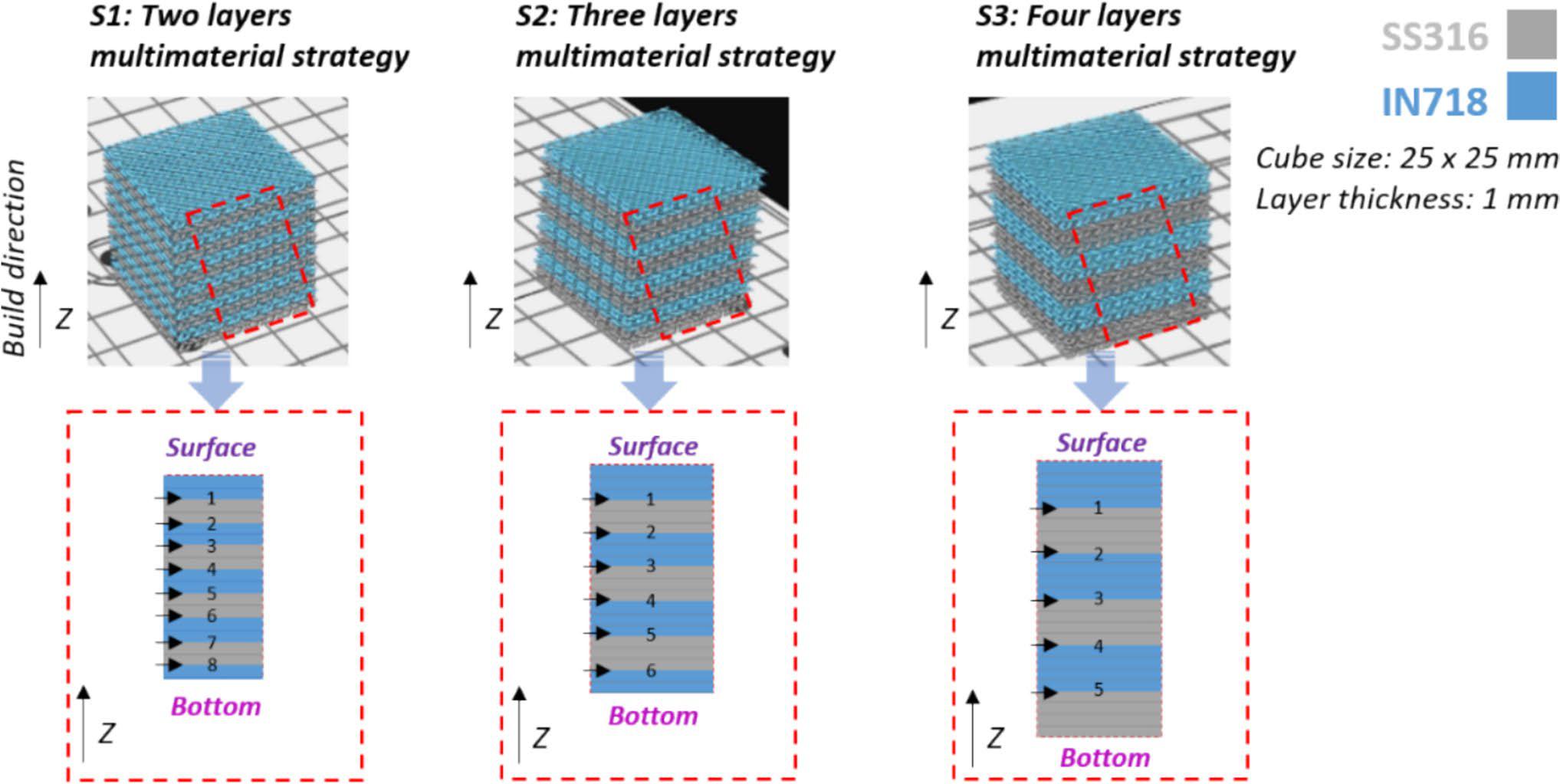
Each design included seamless transitions between materials, allowing researchers to study the effect of the number of layers on defects, microstructure and mechanical properties. To ensure consistency, the DED process parameters – laser power, print speed and inert gas flow – were carefully controlled.
Analysis methods
The samples were examined using advanced microscopy techniques to analyse cross-sections and detect defects such as cracks, pores or lack of fusion. Hardness measurements were also taken for each region (SS316, IN718 and their interface) to assess the mechanical properties across the material gradient.
4. Key insights: What we learned from combining SS316 and Inconel 718
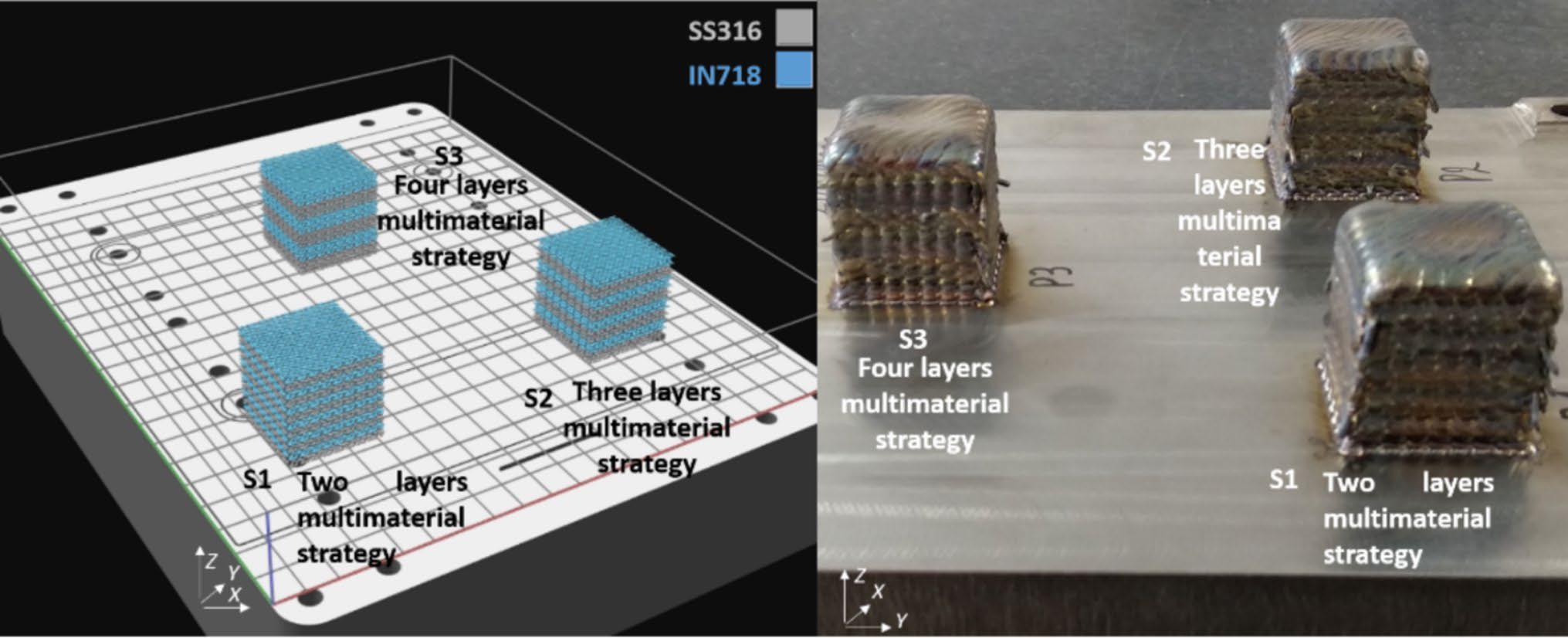
Defects
One of the primary challenges in multimaterial manufacturing is the formation of defects due to differences in thermal and mechanical properties between materials. The study revealed the following:
- Defects in lower layer designs (cracks in S1): The two-layer design exhibited repeated cracks at the interface, primarily caused by residual thermal stresses.
- Thermal gradient management: Isolated pores were observed in the three-layer (S2) and four-layer (S3) samples. Increasing the number of layers improved thermal gradient management, resulting in fewer defects like pores and cracks.
- Interphase Challenges: Differences in material properties, such as thermal expansion coefficients, and supercooling effects posed bonding challenges, requiring careful optimization of process parameters was necessary to overcome these issues.
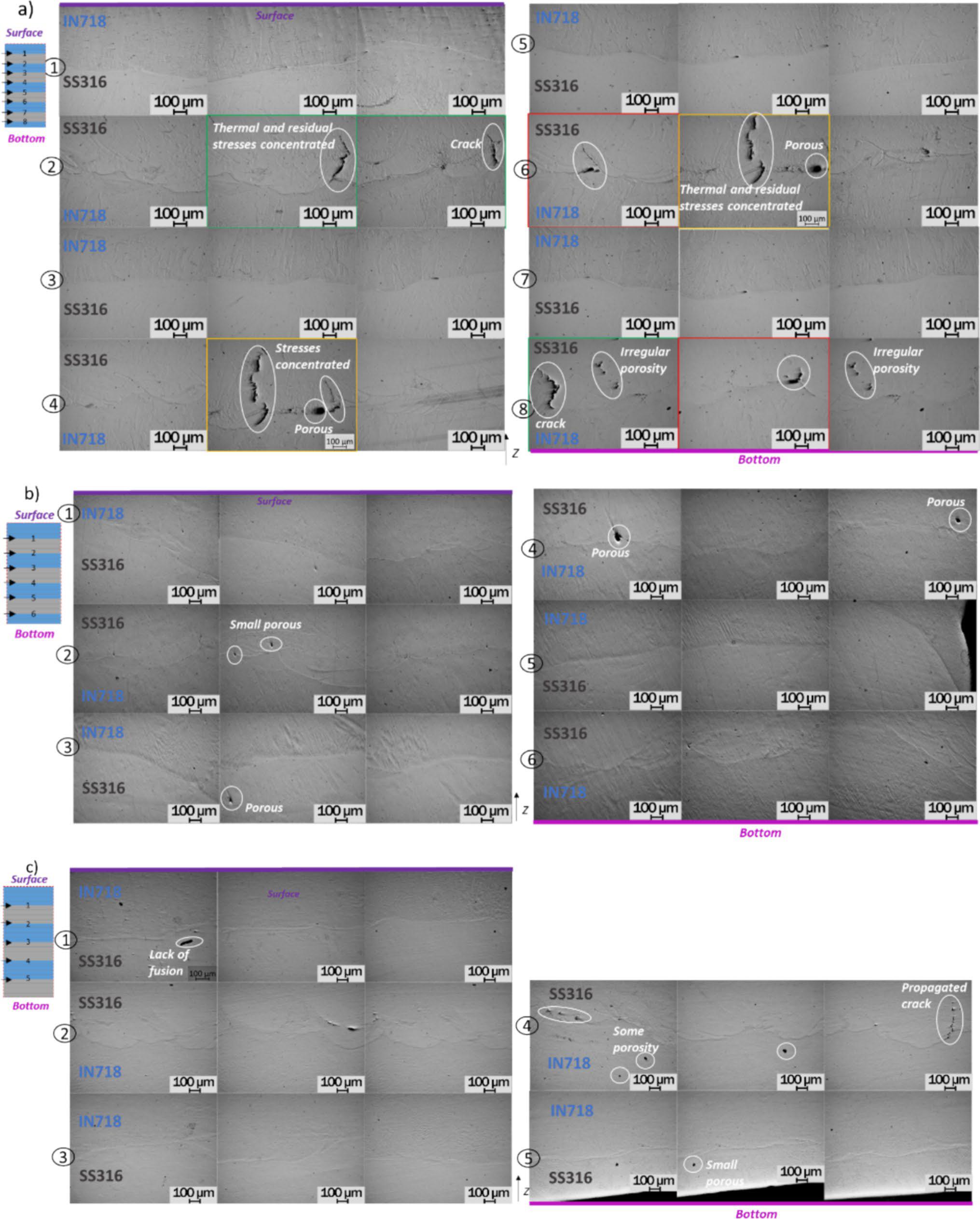
Microstructure
The study provided important insights into the microstructure of multimaterial samples:
- A smooth transition zone was identified at the IN718/SS316 interface in the S3 sample, showing a microstructural gradient, with fine grains transitioning seamlessly between the two materials.
- Across both materials, fine grains were achieved through precise cooling rate control during the Directed Energy Deposition (DED) process. These refined grains significantly enhanced mechanical properties, such as hardness and strength.
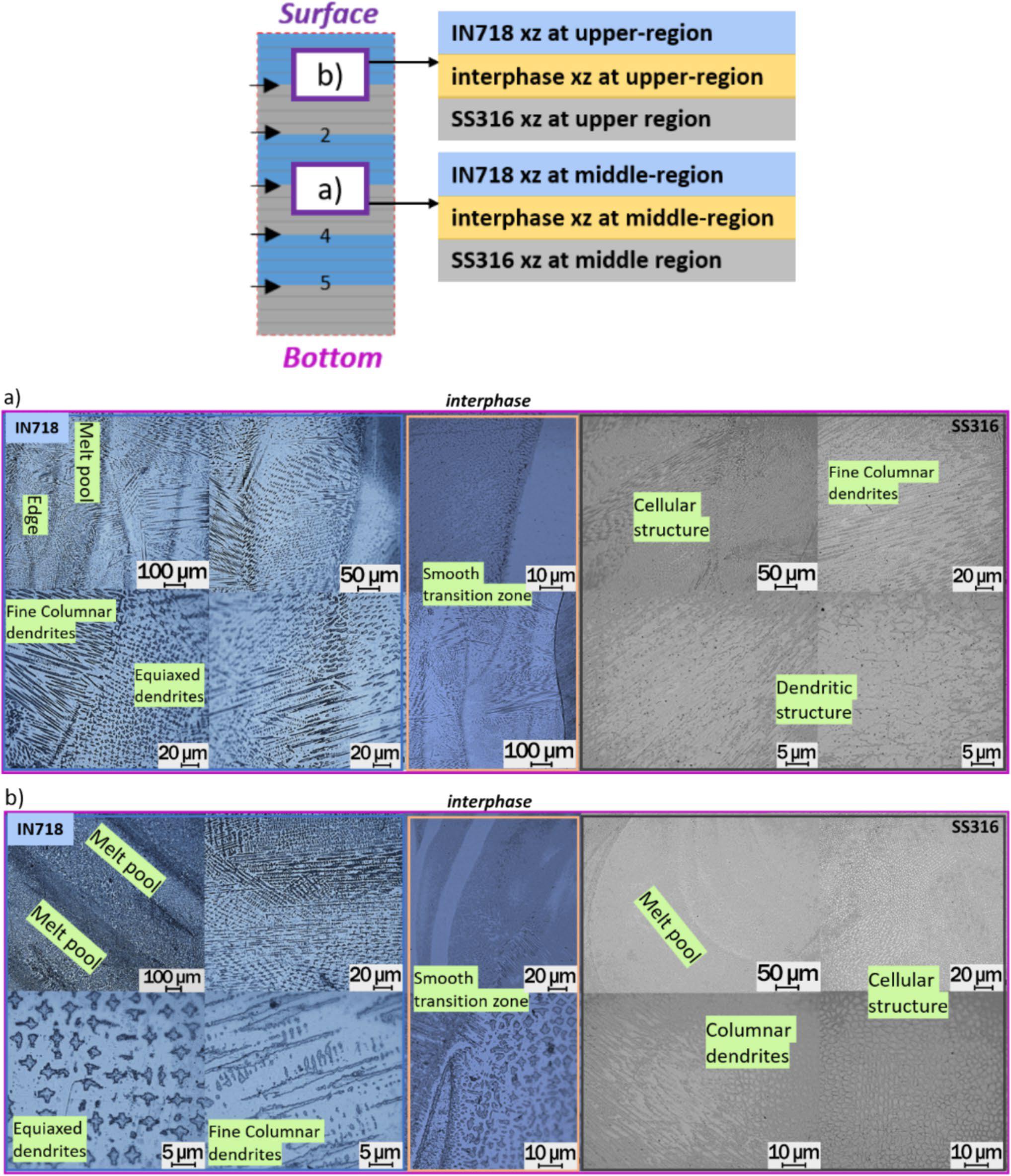
Hardness profile
Multimaterial samples developed through four layers per material showed the highest hardness profile:
- Inconel Region: 55 HRC (the S3 sample showed significantly higher values than conventional Inconel alloy).
- Interface (IN718/SS316): 34 HRC.
- Stainless Steel Region: 9 HRC.
This gradient demonstrates the effective integration of the two materials and suggests that components made with this process can handle varying stress conditions across different regions.
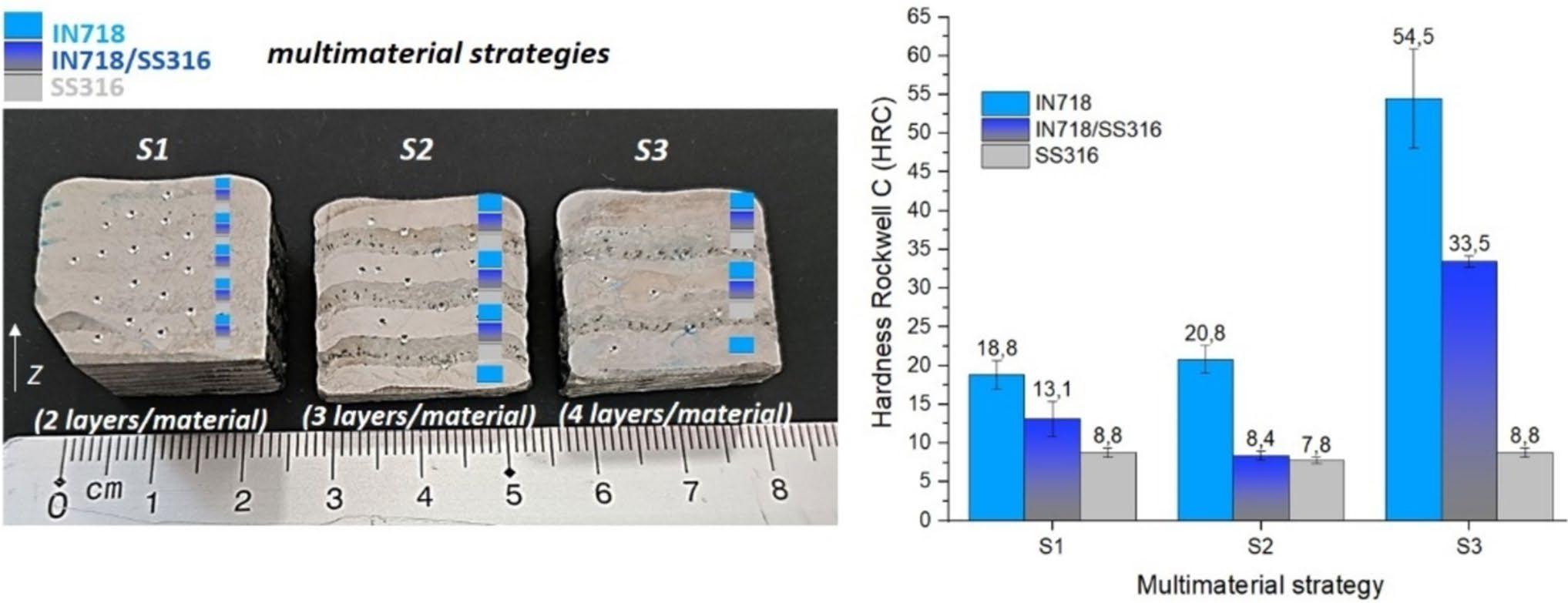
5. Advantages of Meltio technology
Leveraging Meltio’s cutting-edge 3D printing technology brings transformational benefits to the naval sector, optimising operations, reducing costs and increasing mission effectiveness.
Here’s how:
Developing metallic multimaterials as a single-step process without the necessity of joining pos-processing methods
Traditional methods often require complex joining techniques or extensive post-processing to combine different metals. The latest advances streamline this process into a single-step manufacturing method, eliminating the need for additional processing. This not only simplifies production but also ensures the seamless integration of materials with superior performance characteristics.
Enabling design freedom for customization
Create intricate, tailored designs without the limitations of traditional manufacturing. With Meltio 3D printing technology, customized parts with specific requirements are possible.
Cost-effective and environmentally friendly manufacturing solutions
With a reduced amount of raw material and material waste, Meltio additive manufacturing technology also reduces production costs saving energy, time, and steps.
These advancements aren’t just technical feats—they’re shaping the future of sustainable manufacturing, paving the way for smarter, more efficient production practices.
6. Conclusion
This study has shown that Meltio wire-DED can successfully produce SS316-IN718 multi-material samples with different layer configurations (two, three and four layers per material). The four-layer sample (S3) showed the best performance with fewer defects, smooth microstructure transition and superior hardness. The results highlighted that increasing the number of layers improves material integration and reduces defects such as cracks and porosity. The hardness profile also showed improved values in the IN718 region and at the interface compared to conventional materials. This research contributes to the advancement of multi-material additive manufacturing, with future work focusing on chemical composition and mechanical testing for further optimisation.
This advance represents a significant step forward in innovative manufacturing, particularly through the use of wire-based Directed Energy Deposition (DED) to combine SS316 and Inconel 718. By overcoming challenges such as interlayer defects, this study opens the door to the development of stronger, more versatile components.
Industries such as aerospace, energy and automotive, where high-performance materials are critical, stand to benefit greatly from Meltio additive manufacturing technology, enabling the production of components that are both stronger and lighter, with improved durability and performance.
